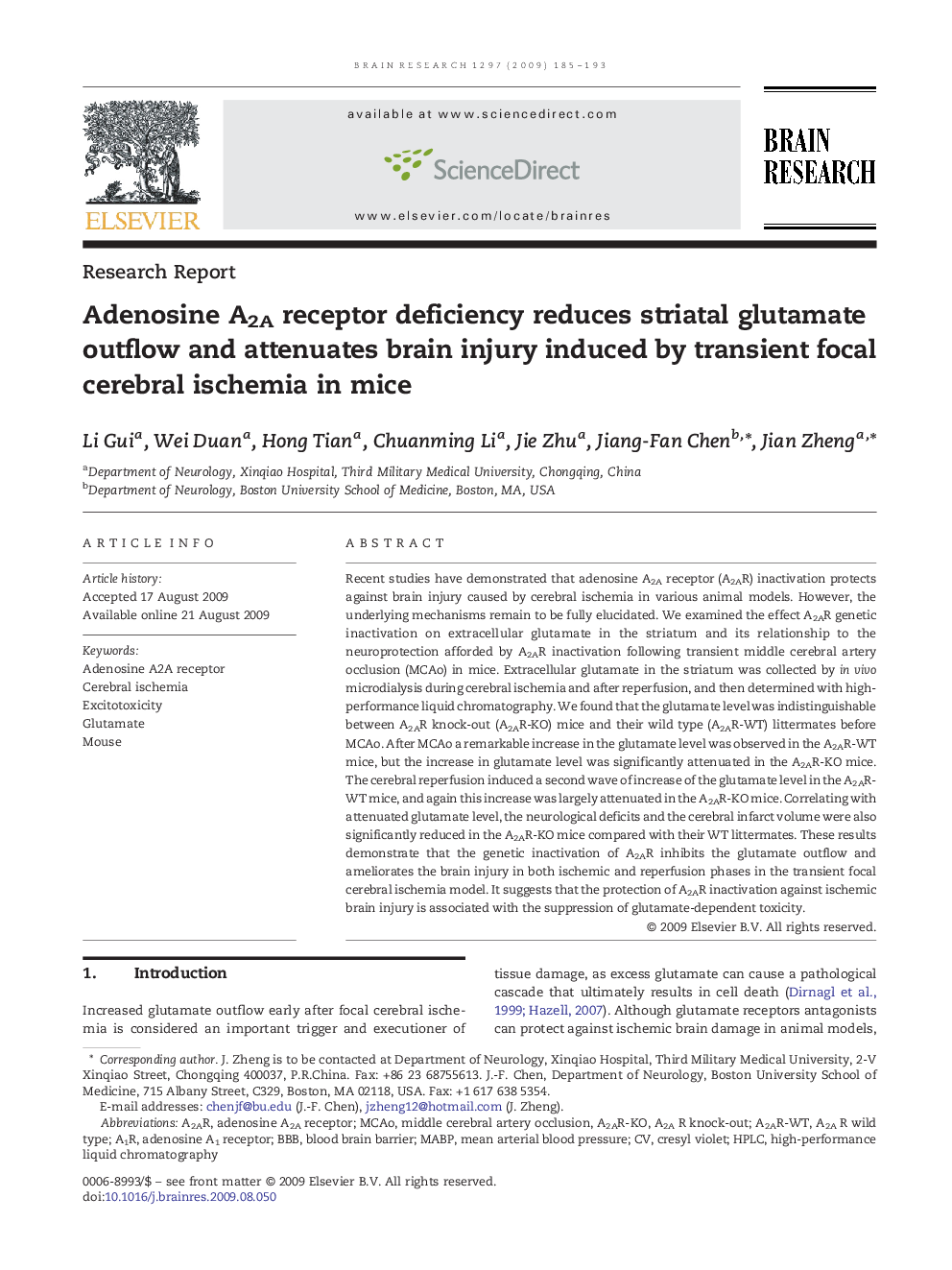| Article ID | Journal | Published Year | Pages | File Type |
|---|---|---|---|---|
| 4327814 | Brain Research | 2009 | 9 Pages |
Recent studies have demonstrated that adenosine A2A receptor (A2AR) inactivation protects against brain injury caused by cerebral ischemia in various animal models. However, the underlying mechanisms remain to be fully elucidated. We examined the effect A2AR genetic inactivation on extracellular glutamate in the striatum and its relationship to the neuroprotection afforded by A2AR inactivation following transient middle cerebral artery occlusion (MCAo) in mice. Extracellular glutamate in the striatum was collected by in vivo microdialysis during cerebral ischemia and after reperfusion, and then determined with high-performance liquid chromatography. We found that the glutamate level was indistinguishable between A2AR knock-out (A2AR-KO) mice and their wild type (A2AR-WT) littermates before MCAo. After MCAo a remarkable increase in the glutamate level was observed in the A2AR-WT mice, but the increase in glutamate level was significantly attenuated in the A2AR-KO mice. The cerebral reperfusion induced a second wave of increase of the glutamate level in the A2AR-WT mice, and again this increase was largely attenuated in the A2AR-KO mice. Correlating with attenuated glutamate level, the neurological deficits and the cerebral infarct volume were also significantly reduced in the A2AR-KO mice compared with their WT littermates. These results demonstrate that the genetic inactivation of A2AR inhibits the glutamate outflow and ameliorates the brain injury in both ischemic and reperfusion phases in the transient focal cerebral ischemia model. It suggests that the protection of A2AR inactivation against ischemic brain injury is associated with the suppression of glutamate-dependent toxicity.
